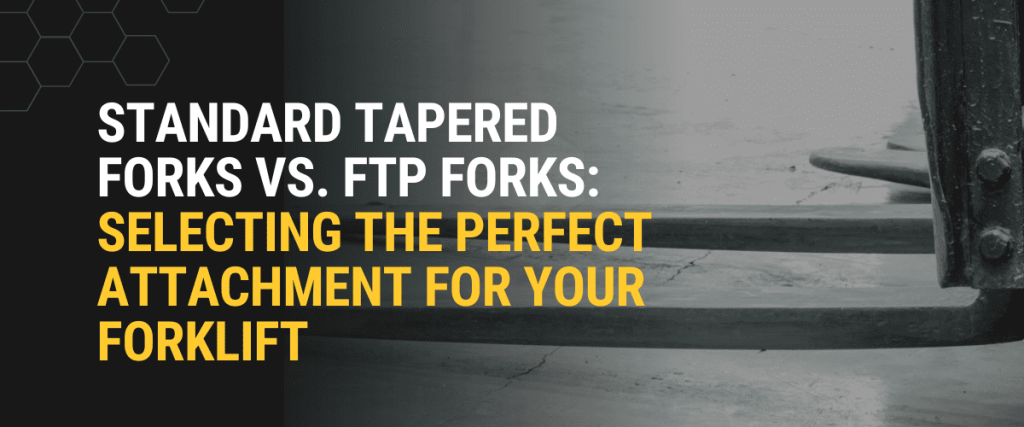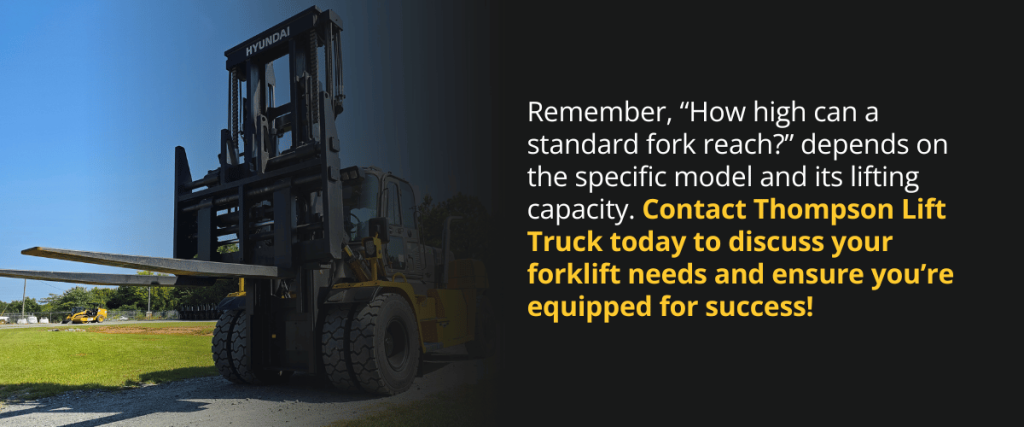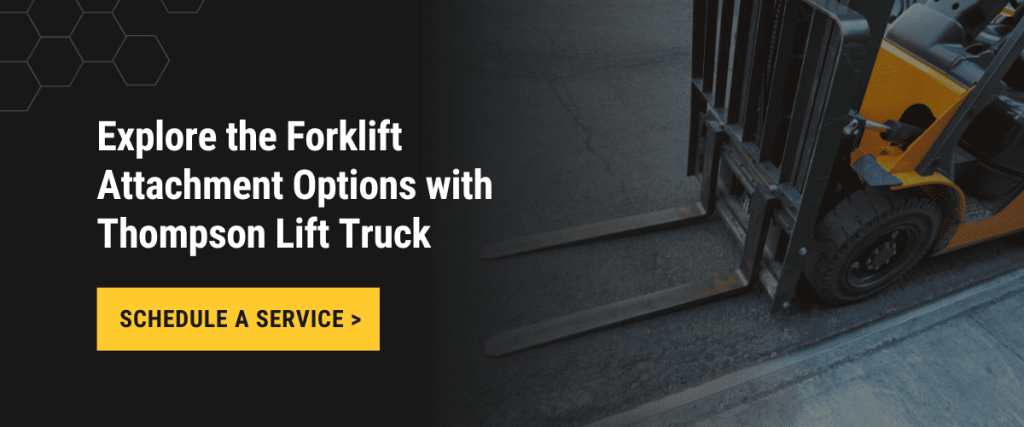
Standard Tapered Forks vs FTP Forks

Selecting the Perfect Attachment for Your Forklift
At Thompson Lift Truck, we’re dedicated to empowering businesses across various industries with the right tools for success. When it comes to choosing new forklifts, a crucial element beyond the machine itself is the attachment – the fork. While you might be wondering “what are the most common Forks?” there are actually two main types to consider: standard tapered forks and fully tapered forks (FTP forks). Let’s explore these options and dive into some essential forklift safety standards.
Standard Tapered Forks: The Versatile Workhorse
Standard Tapered Forks are the most common forklifts on the market. These reliable attachments boast a wider base that tapers towards the tip, typically starting 16-24 inches (40-60 cm) from the end. This design makes them perfect for:
- General Warehousing: Standard tapered forks excel at routine pallet handling and maneuvering within warehouses.
- Cost-Effectiveness: They’re a budget-friendly option for businesses with straightforward lifting needs.
- Compatibility: These forks seamlessly integrate with a wide range of forklift models, including those from leading brands like Hyundai, Combilift, Crown, and Kalmar.

FTP Forks: Specialized Maneuverability
For those requiring more specialized performance, FTP forks offer a distinct advantage. Featuring a taper that runs the entire length of the fork, they boast a thinner and sharper tip. This design translates to several benefits:
- Enhanced Maneuverability: The narrower tip allows for effortless insertion into tightly packed materials like lumber, plywood, or rolled carpets.
- Reduced Damage: The smooth, polished finish minimizes friction, preventing damage to delicate goods during insertion or removal.
- Versatility: FTP forks excel at “scooping” un-palletized materials directly from the ground, making them ideal for construction or landscaping applications.
Fork Safety Standards: A Top Priority
Before we dive into “Different sizes in Fork” and reach heights, it’s crucial to emphasize forklift safety standards. Here at Thompson Lift Truck, safety is paramount. Always ensure your forks are:
- Rated for the weight of your loads: Exceeding capacity can lead to accidents.
- Regularly inspected for cracks or damage: Damaged forks pose a safety risk. We can help you with regular inspections at Thompson Lift Truck
- Used in accordance with proper forklift lifting techniques: Improper lifting can cause instability.

Choosing the Right Fork for Your Needs
The optimal fork choice hinges on your specific requirements. Consider these factors:
- Typical Loads: What materials will you be handling most frequently? Standard tapered forks are sufficient for palletized goods, while FTP forks excel with specific materials.
- Warehouse Layout: Do you have tight aisles or require precise maneuvering? FTP forks offer better maneuverability.
- Budget: Standard tapered forks are generally more affordable, while FTP forks offer specialized advantages at a slightly higher cost.
Thompson Lift Truck – Your Forklift Partner
Thompson Lift Truck is here to guide you through the world of forklifts and attachments. Our team of specialists will assess your specific needs and recommend the optimal forklift and fork combination for your operation. We offer a comprehensive selection of new and used forklifts, genuine parts, and exceptional service, ensuring you have the tools to excel in any application.
Remember, “How high can a standard fork reach?” depends on the specific model and its lifting capacity. Contact us today to discuss your forklift needs and ensure you’re equipped for success!
